What do Alumni Fellows go on to do after their Fellowship? To commemorate the decade of the Fellows Program, we asked Alumni to update us on their advocacy work, share reflections on their Fellowship experience and their thoughts on HIV prevention.
Hover over the map above for more information. And it is available for download as a JPG, PDF, or PPT.
Countries
Botswana / India / Kenya / Lesotho / Malawi / Nigeria / South Africa / Tanzania / Uganda / Zambia / Zimbabwe
Botswana
Kennedy Mupeli – 2018
What are you up to now?
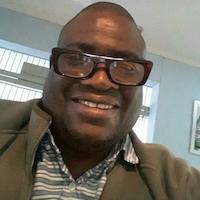 I am currently engaged in science literacy training for civil society organizations for people living with HIV. I am also involved in national U=U campaigns.
I am currently engaged in science literacy training for civil society organizations for people living with HIV. I am also involved in national U=U campaigns.
If you’re still involved in advocacy, please describe your primary advocacy goals.
My advocacy goal is to secure funding for science literacy.
In your opinion, what are one or two key advocacy priorities related to HIV/AIDS in your country or community today?
One of our national priorities is ensuring that all AIDS-based organizations incorporate science literacy.
If you can, please reflect on the aspect of your Fellowship you’ve taken with you.
The Fellowship opened great opportunities for me and my community.
India
Sarah Nabia – 2019
What are you up to now?
 I am currently an MPH/MBA dual degree student at Bloomberg School of Public Health and Carey Business School, Johns Hopkins University.
I am currently an MPH/MBA dual degree student at Bloomberg School of Public Health and Carey Business School, Johns Hopkins University.
In your opinion, what are one or two key advocacy priorities related to HIV/AIDS in your country or community today?
A major advocacy goal is to ensure that PrEP rollout remains a priority even as efforts are redirected toward COVID-19 advocacy.
If you can, please reflect on the aspect of your Fellowship you’ve taken with you.
Through my Fellowship, I learned how to conduct stakeholder mapping and implement strategic targeting.
Kenya
Grace Kamau – 2011
What are you up to now?
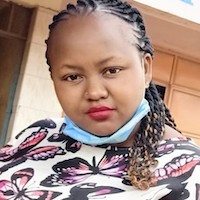 I’m currently the Regional Coordinator of the Africa Sex Workers Alliance (ASWA). Some of my roles are resource mobilization and networking.
I’m currently the Regional Coordinator of the Africa Sex Workers Alliance (ASWA). Some of my roles are resource mobilization and networking.
If you’re still involved in advocacy, please describe your primary advocacy goals.
My advocacy goals include advocating for the decriminalization of sex work and increased funding for community-led organizations.
In your opinion, what are one or two key advocacy priorities related to HIV/AIDS in your country or community today?
One major key advocacy goal in my country is improving access to health services and nutritional supplements, particularly for sex workers and other key populations.
If you can, please reflect on the aspect of your Fellowship you’ve taken with you.
The strong advocacy skills I acquired through my Fellowship have helped me in every space I occupy.
Simon Ondiek – 2011
What are you up to now?
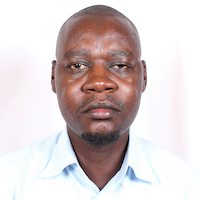 I work in implementation science to ensure that affected communities are able to actively participate in and inform HIV prevention research.
I work in implementation science to ensure that affected communities are able to actively participate in and inform HIV prevention research.
If you’re still involved in advocacy, please describe your primary advocacy goals.
My current advocacy goals include increasing uptake for key populations and improving prevention options for adolescents and young women.
In your opinion, what are one or two key advocacy priorities related to HIV/AIDS in your country or community today?
There’s a need for woman-controlled methods for HIV prevention (specifically for adolescents and young women) to ensure that there are no new HIV infections.
If you can, please reflect on the aspect of your Fellowship you’ve taken with you.
Through my Fellowship, I learned more about stakeholder engagement, policy advocacy and implementation research.
Lucy Ghati – 2012
What are you up to now?
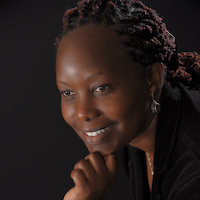 I am currently heading Kenya’s chapter of the International Community of Women Living With HIV to ensure that our rights are respected and promoted. I recently joined the Multistakeholder Task Team for UNAIDS to explore ways to enhance reporting on community-led HIV responses and to ensure access to funding for community-led HIV responses.
I am currently heading Kenya’s chapter of the International Community of Women Living With HIV to ensure that our rights are respected and promoted. I recently joined the Multistakeholder Task Team for UNAIDS to explore ways to enhance reporting on community-led HIV responses and to ensure access to funding for community-led HIV responses.
If you’re still involved in advocacy, please describe your primary advocacy goals.
My goals include reducing HIV-related stigma and discrimination that continue to disproportionately affect women and adolescents living with and most vulnerable to HIV. I am also invested broadly in advocacy related to women’s human rights.
In your opinion, what are one or two key advocacy priorities related to HIV/AIDS in your country or community today?
Priorities are empowerment and resource allocation for community HIV interventions and transparency and accountability around HIV resources.
If you can, please reflect on the aspect of your Fellowship you’ve taken with you.
The communities that are affected and most vulnerable to HIV (and other epidemics) have immense ability to positively impact their own lives. With the knowledge and skills I gained from the Fellowship, I continue to enhance my community’s engagement in the effort to end the AIDS epidemic.
Consolata Opiyo – 2012
What are you up to now?
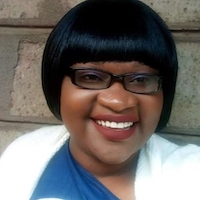 I’m the Vice Chairperson for the International Community of Women Living with HIV in Eastern Africa (ICWEA). I’m also on WHO’s Women Living with HIV Advisory Group and was elected as the alternative TB representative in the Kenya Coordinating Mechanism of the Global Fund Board (CCM). I also started working with GNP+ as a project assistant for the Global Partnership for Action to end all forms of HIV- Related stigma.
I’m the Vice Chairperson for the International Community of Women Living with HIV in Eastern Africa (ICWEA). I’m also on WHO’s Women Living with HIV Advisory Group and was elected as the alternative TB representative in the Kenya Coordinating Mechanism of the Global Fund Board (CCM). I also started working with GNP+ as a project assistant for the Global Partnership for Action to end all forms of HIV- Related stigma.
If you’re still involved in advocacy, please describe your primary advocacy goals.
One of my major advocacy goals is in TB preventive therapy (TPT): I am advocating for 3HP, a 3-month regimen of Isoniazid and Rifapentine. Since it’s recommended that PLHIV receive TB preventive therapy, more than one preventive therapy option is needed.
In your opinion, what are one or two key advocacy priorities related to HIV/AIDS in your country or community today?
The first priority in our country is drug stockpiling, especially for Septrin and some ARVs (especially dosages that are not combined); the second is increased access to sexual and reproductive health (SRH). Due to COVID-19, focus on HIV-related services including SRH and viral load testing has been deprioritized and must be once again brought to the fore.
If you can, please reflect on the aspect of your Fellowship you’ve taken with you.
During my Fellowship, I was encouraged to be proactive and take charge of my project. I also sharpened my research skills, which have helped me in my current role as a project assistant with GNP+. My Fellowship training has also taught me to handle matters with patience.
Jacque Wambui – 2012
What are you up to now?
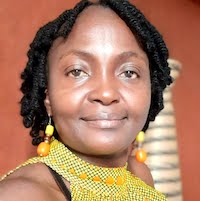 I currently sit on the AfroCAB Treatment Access Partnership Community Advisory Board as an alternate representative of Kenya. I also lead Kenya’s Treatment CAB and am a member of the ECHO Trial Global Community Advisory Board (GCAG).
I currently sit on the AfroCAB Treatment Access Partnership Community Advisory Board as an alternate representative of Kenya. I also lead Kenya’s Treatment CAB and am a member of the ECHO Trial Global Community Advisory Board (GCAG).
If you’re still involved in advocacy, please describe your primary advocacy goals.
I advocate for sexual and reproductive health (SRH) and HIV prevention integration. I successfully advocated for the use of dolutegravir among women of reproductive age, and I still advocate for the use of optimal HIV treatment.
I have also effectively disseminated the ECHO trial results locally and regionally in my role as a GCAG member representing Kenya. I received the Women and Girls Investigative Award in 2020.
In your opinion, what are one or two key advocacy priorities related to HIV/AIDS in your country or community today?
Priorities include the continued use and access to optimal HIV treatment along with access to integrated SRH and HIV services.
If you can, please reflect on the aspect of your Fellowship you’ve taken with you.
My supervisor presented me with the “Travelling Powerhouse Award” when I completed my Fellowship in 2012, and I still travel the world. As a fellow, I learned to confront policy makers head-on, and I carry that skill with me today.
Maureen Milanga – 2013
What are you up to now?
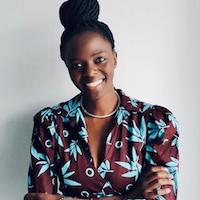 Since the Fellowship, I have been working at Health GAP where I have increased my HIV advocacy work from just focusing on Kenya to supporting different areas of HIV advocacy across the organization’s seven focus countries. I have also expanded my advocacy work to increase collaboration with key populations.
Since the Fellowship, I have been working at Health GAP where I have increased my HIV advocacy work from just focusing on Kenya to supporting different areas of HIV advocacy across the organization’s seven focus countries. I have also expanded my advocacy work to increase collaboration with key populations.
If you’re still involved in advocacy, please describe your primary advocacy goals.
My current goal is to ensure that countries improve HIV service delivery for key populations.
In your opinion, what are one or two key advocacy priorities related to HIV/AIDS in your country or community today?
Advocacy priorities within Kenya and other countries where I work include increasing access to a range of prevention options and self-testing. In addition, it is key to ensure that PLHIV and key populations have access to the latest treatment options and that the community supports their adherence.
If you can, please reflect on the aspect of your Fellowship you’ve taken with you.
The Fellowship was central to expanding my advocacy networks across multiple countries. Through these networks, I have developed partnerships and worked to increase access to services and expand community involvement in decision-making spaces. I have also learned about the importance of learning from others.
Everlyne Ombati – 2014
What are you up to now?
 I am the program coordinator for CBEC-KEMRI Bioethics Training Initiative (CKBTI), an NIH FIC- funded bioethics training program established to create bioethics capacity in Kenya.
I am the program coordinator for CBEC-KEMRI Bioethics Training Initiative (CKBTI), an NIH FIC- funded bioethics training program established to create bioethics capacity in Kenya.
If you’re still involved in advocacy, please describe your primary advocacy goals.
I am not currently engaged in HIV prevention advocacy work, but my advocacy goals center around improving bioethics in Kenya.
In your opinion, what are one or two key advocacy priorities related to HIV/AIDS in your country or community today?
Over the years, the general prevalence of HIV has been reduced, but adolescent girls and young women still continue to bear the brunt of the disease. We need to continue working on finding prevention options for this demographic. Further, during the COVID-19 pandemic, women and young girls are facing increased levels of gender-based violence. We know that this is shown to be a driver for HIV infection, And we need to address issues such as this that contribute to high rates of HIV/AIDS among women and young girls.
If you can, please reflect on the aspect of your Fellowship you’ve taken with you.
My Fellowship focused on preparation for and access to multipurpose technologies and microbicides. Many years after my Fellowship, I still have opportunities to give talks about microbicides and MPTs.
Teresia Otieno – 2014
What are you up to now?
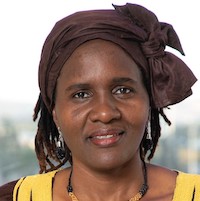 I am currently working for a community-based organization in Seattle called the Center for Multicultural Health. My work involves providing direct services to African Americans and African immigrants and refugees. I am also a member of the ATHENA Network, the Ryan White Planning Council and the US People Living With HIV Caucus steering committee.
I am currently working for a community-based organization in Seattle called the Center for Multicultural Health. My work involves providing direct services to African Americans and African immigrants and refugees. I am also a member of the ATHENA Network, the Ryan White Planning Council and the US People Living With HIV Caucus steering committee.
If you’re still involved in advocacy, please describe your primary advocacy goals.
My advocacy priorities include meaningfully contributing to the End the Epidemic agenda as a representative from the Care and Prevention Advisory Group in King County, Washington. I am also focused on ensuring that we use lessons learned from the HIV epidemic to inform the COVID-19 response.
In your opinion, what are one or two key advocacy priorities related to HIV/AIDS in your country or community today?
My priorities include: 1) ending the epidemic through meaningful community engagement and 2) ensuring inclusive and informed COVID-19 responses with regards to the HIV community.
If you can, please reflect on the aspect of your Fellowship you’ve taken with you.
I work as a PrEP navigator and participant in the evaluation of PrEP interventions among key populations. At the ATHENA Network, I support young women in South and Eastern Africa in advocacy for PrEP and sexual and reproductive health and rights. I have used my Fellowship experience and lessons to inform all of the work that I do today.
Carolyne Njoroge – 2015
What are you up to now?
 I continue to work in advocacy, with a focus on capacity building and community and economic empowerment for sex worker-led organizations in Kenya.
I continue to work in advocacy, with a focus on capacity building and community and economic empowerment for sex worker-led organizations in Kenya.
If you’re still involved in advocacy, please describe your primary advocacy goals.
My primary advocacy goal is centered on empowering community members to participate in decision-making related to multipurpose prevention technology.
In your opinion, what are one or two key advocacy priorities related to HIV/AIDS in your country or community today?
National priorities include improving access to PrEP and multipurpose prevention technologies.
If you can, please reflect on the aspect of your Fellowship you’ve taken with you.
Through my Fellowship, I learned that we all have the power to influence change in our communities if we work strategically with our allies and equip ourselves with adequate knowledge.
Godfrey Okumu – 2016
What are you up to now?
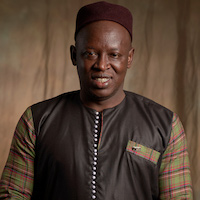 I currently work at Tostan International, where I focus on building partnerships and monitoring and evaluation. I am also the focal person for the Tostan’s Training and Replication pathway, where I support a pilot advocacy project in Nigeria called “Uniting Nigerian Communities to End Violence Against Women and Girls”.
I currently work at Tostan International, where I focus on building partnerships and monitoring and evaluation. I am also the focal person for the Tostan’s Training and Replication pathway, where I support a pilot advocacy project in Nigeria called “Uniting Nigerian Communities to End Violence Against Women and Girls”.
If you’re still involved in advocacy, please describe your primary advocacy goals.
My advocacy goals include improving girls’ access to quality education, supporting women’s economic empowerment and ending violence against women and girls.
In your opinion, what are one or two key advocacy priorities related to HIV/AIDS in your country or community today?
National priorities include improving access to HIV prevention options for girls and women and translating HIV prevention messages into local languages among key populations.
If you can, please reflect on the aspect of your Fellowship you’ve taken with you.
The Fellowship empowered me and exposed me to the world of advocacy and HIV research. Because of the Fellowship, I am now a holistic advocacy expert.
Peter Mogere – 2017
What are you up to now?
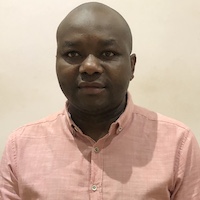 I currently oversee several HIVST and PrEP delivery studies being implemented in collaboration with government and private facilities.
I currently oversee several HIVST and PrEP delivery studies being implemented in collaboration with government and private facilities.
If you’re still involved in advocacy, please describe your primary advocacy goals.
Once an advocate, always an advocate! One of my main advocacy priorities is ensuring that communities are involved in conversations about research priorities and in finding solutions to domestic problems.
In your opinion, what are one or two key advocacy priorities related to HIV/AIDS in your country or community today?
One national priority includes expanding access points for PrEP.
If you can, please reflect on the aspect of your Fellowship you’ve taken with you.
My experience with the Fellowship helped me learn how to dispel myths around and improve access to HIV self-testing.
Mercy Mutonyi – 2019
What are you up to now?
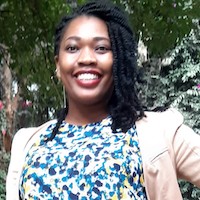 I’m the Project Manager for the BHESP Global Fund/Kenya Redcross project for female sex workers. I also support the 30 under 30 AYP awardees for RHAY (Reducing HIV in Adolescents and Youth) Conference. Lastly, I’m actively engaged in national key population, PrEP and AGYW technical working groups.
I’m the Project Manager for the BHESP Global Fund/Kenya Redcross project for female sex workers. I also support the 30 under 30 AYP awardees for RHAY (Reducing HIV in Adolescents and Youth) Conference. Lastly, I’m actively engaged in national key population, PrEP and AGYW technical working groups.
If you’re still involved in advocacy, please describe your primary advocacy goals.
I’m still actively involved in advocacy around amplifying the voices of sex workers and young women, specifically with regards to human rights-based approaches in HIV testing, prevention and treatment. I have done this through my participation in the TWGs, PEPFAR and Global Fund Forums.
In your opinion, what are one or two key advocacy priorities related to HIV/AIDS in your country or community today?
Currently, Kenya’s key advocacy priorities are around the sustainability of HIV prevention programs and improving the accessibility and availability of new HIV prevention options (e.g., the dapivirine ring) to those who most need them, such as female sex workers and young women.
If you can, please reflect on the aspect of your Fellowship you’ve taken with you.
The Fellowship moulded and continues to mould me into a multifaceted HIV prevention advocate.
Lesotho
Lepheana Mosooane – 2016
What are you up to now?
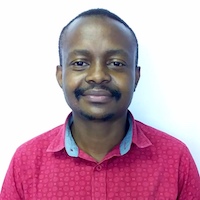 I am the founder and Interim Coordinator of the Key Affected Populations Alliance of Lesotho, the first and the only sex workers’ organisation in Lesotho. I am also The Program Coordinator at Disabled and HIVAIDS Organization Lesotho, where I coordinate the MSMs project funded by USAID.
I am the founder and Interim Coordinator of the Key Affected Populations Alliance of Lesotho, the first and the only sex workers’ organisation in Lesotho. I am also The Program Coordinator at Disabled and HIVAIDS Organization Lesotho, where I coordinate the MSMs project funded by USAID.
If you’re still involved in advocacy, please describe your primary advocacy goals.
My key priority is to advocate for the decriminalization of sex work in Lesotho and to ensure equal access to health services for key populations.
In your opinion, what are one or two key advocacy priorities related to HIV/AIDS in your country or community today?
A national priority for Lesotho is ensuring that key populations are meaningfully engaged in the development and execution of health service delivery and program strategies.
If you can, please reflect on the aspect of your Fellowship you’ve taken with you.
My Fellowship helped me to develop coalitions with relevant stakeholders.
Malawi
Gift Trapence – 2010
What are you up to now?
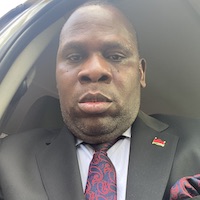 I’m the Director of CEDEP and still do human rights work. I’m also the chairperson of Human Rights Defenders Coalition in Malawi.
I’m the Director of CEDEP and still do human rights work. I’m also the chairperson of Human Rights Defenders Coalition in Malawi.
If you’re still involved in advocacy, please describe your primary advocacy goals.
One of my major advocacy goals is to ensure that vulnerable populations have access to HIV and other health-related services. I’m also broadly invested in protecting citizens’ human rights.
If you can, please reflect on the aspect of your Fellowship you’ve taken with you.
Although each of us in the Fellowship was working in their home country, cross-country sharing of experiences was very enriching, as we learned what other countries were experiencing and what each of us could possibly replicate in our countries. I still carry that knowledge of prevention tools in other country contexts with me today.
Eric Mcheka – 2014
What are you up to now?
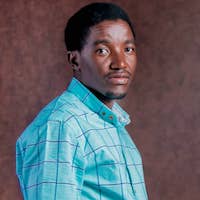 I coordinate the COMPASS Africa Project in Malawi. COMPASS is the Coalition to build Momentum, Power, Activism, Solidarity & Strategy , a multi-country project being implemented in Malawi, Zimbabwe and Tanzania, with possible expansion into other countries as well.
I coordinate the COMPASS Africa Project in Malawi. COMPASS is the Coalition to build Momentum, Power, Activism, Solidarity & Strategy , a multi-country project being implemented in Malawi, Zimbabwe and Tanzania, with possible expansion into other countries as well.
If you’re still involved in advocacy, please describe your primary advocacy goals.
My primary advocacy goal is increased access to treatment and care for PLHIV and increased domestic resources for HIV programming in Malawi.
In your opinion, what are one or two key advocacy priorities related to HIV/AIDS in your country or community today?
We must increase resources for HIV prevention in Malawi. Malawi continues to register too many HIV infections each year.
If you can, please reflect on the aspect of your Fellowship you’ve taken with you.
The Fellowship taught me what advocacy is and to remain fearless and always have my facts and evidence with me to back my agenda when engaging with different stakeholders.
Maureen Luba – 2015
What are you up to now?
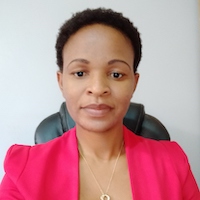 I work at AVAC and help to coordinate the COMPASS Project, a regional project focusing on enhancing CSO Advocacy work in Tanzania, Malawi and Zimbabwe.
I work at AVAC and help to coordinate the COMPASS Project, a regional project focusing on enhancing CSO Advocacy work in Tanzania, Malawi and Zimbabwe.
If you’re still involved in advocacy, please describe your primary advocacy goals.
My advocacy goals include improving sexual and reproductive health and rights (SRHR) and HIV integration and mitigating the impact of COVID-19 on the national HIV response.
In your opinion, what are one or two key advocacy priorities related to HIV/AIDS in your country or community today?
A major advocacy priority is scaling up PrEP, HIV and SRHR integration.
If you can, please reflect on the aspect of your Fellowship you’ve taken with you.
The mentorship I received during the Fellowship had a great impact on me.
Kingsley Chasanga 2016
What are you up to now?
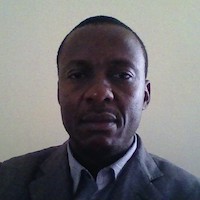 I am currently working as the Partnership and Integration Officer at FHI360 under the Health Communication for Life program.
I am currently working as the Partnership and Integration Officer at FHI360 under the Health Communication for Life program.
If you’re still involved in advocacy, please describe your primary advocacy goals.
My Fellowship focused on advocacy for PrEP, and I continue to advocate for enhancing communication programming around social and behavioral change.
In your opinion, what are one or two key advocacy priorities related to HIV/AIDS in your country or community today?
PrEP rollout among key populations is a major priority for my community.
If you can, please reflect on the aspect of your Fellowship you’ve taken with you.
My Fellowship was a rewarding experience and helped me to learn and share experiences with other advocates. It also connected me to several platforms that have expanded my exposure to new information in HIV research and advocacy.
Grace Kumwenda – 2017
What are you up to now?
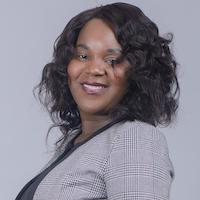 I work with Pakachere IHDC as the Chief-of-Party, leading a key population program called Local Endeavors for HIV/AIDS Prevention and Treatment (LEAP). I continue to engage in advocacy around HIV prevention research through different platforms, including the Next Generation Trial Design Academy and the HIV Forum (PrEP Steering Committee).
I work with Pakachere IHDC as the Chief-of-Party, leading a key population program called Local Endeavors for HIV/AIDS Prevention and Treatment (LEAP). I continue to engage in advocacy around HIV prevention research through different platforms, including the Next Generation Trial Design Academy and the HIV Forum (PrEP Steering Committee).
If you’re still involved in advocacy, please describe your primary advocacy goals.
I am working to promote access to comprehensive HIV services for key populations. I am also committed to enhancing community engagement in clinical trials at all levels, including protocol development, implementation and post-trial work.
In your opinion, what are one or two key advocacy priorities related to HIV/AIDS in your country or community today?
It is necessary to expand access to prevention options, including PrEP, among high-risk populations. Another priority is ensuring differentiated service delivery modalities for ART.
If you can, please reflect on the aspect of your Fellowship you’ve taken with you.
There is so much that I still carry with me from the Fellowship. I have a great network of mentors and alumni who have continued to support my career, and I value the skills I have gained in advocacy and knowledge around complex HIV science areas. The Fellowship was a defining moment in my career.
Ulanda Mtamba – 2018
What are you up to now?
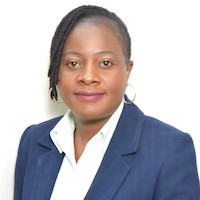 I am the Country Director for Advancing Girls’ Education in Africa. I focus on sexual and reproductive health and rights for adolescent girls and young women (AGYW) in Malawi. In my country, I also advocate for HIV cure research through media and engagement with key stakeholders.
I am the Country Director for Advancing Girls’ Education in Africa. I focus on sexual and reproductive health and rights for adolescent girls and young women (AGYW) in Malawi. In my country, I also advocate for HIV cure research through media and engagement with key stakeholders.
If you’re still involved in advocacy, please describe your primary advocacy goals.
My advocacy goals are to ensure that key stakeholders and civil society organizations are engaged, well informed and updated on the dapivirine vaginal ring and to ensure that AGYW and other at risk populations have access to PrEP.
In your opinion, what are one or two key advocacy priorities related to HIV/AIDS in your country or community today?
National priorities include improving the following: 1) access to PrEP for those most at risk for HIV, 2) domestic resource mobilization for HIV prevention, 3) access to and information about VMMC and 4) population size estimates for key populations to guide HIV programming, especially for transgender people and people who inject drugs.
If you can, please reflect on the aspect of your Fellowship you’ve taken with you.
The Fellowship taught me how to use evidenced-based data for advocacy and how to incorporate a range of voices and stakeholders in advocacy and research.
Josephine Chinele – 2019
What are you up to now?
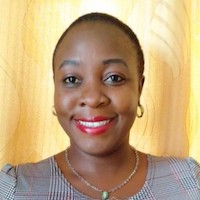 I support communication and advocacy activities at Pakachere, such as the 2020 Civil Society Organization (CSO) HIV Prevention Roadmap Shadow Report. I manage Pakachere’s social media platforms and write articles for the organization. I am on the Ministry of Health task force for the dapivirine ring alongside other AVAC Fellowship Alumni. I also correspond with local and international media publications.
I support communication and advocacy activities at Pakachere, such as the 2020 Civil Society Organization (CSO) HIV Prevention Roadmap Shadow Report. I manage Pakachere’s social media platforms and write articles for the organization. I am on the Ministry of Health task force for the dapivirine ring alongside other AVAC Fellowship Alumni. I also correspond with local and international media publications.
If you’re still involved in advocacy, please describe your primary advocacy goals.
My advocacy goals include: 1) advocating for the national rollout of PrEP through the CSO advocacy forum platforms, the media and other opportunities as they arise, 2) advocating and creating demand for the dapivirine ring among adolescent girls and young women (AGYW) and 3) engaging policy makers and the media in combination HIV prevention.
In your opinion, what are one or two key advocacy priorities related to HIV/AIDS in your country or community today?
National PrEP rollout is a priority. It is also imperative that we increase allocation for HIV prevention, as the majority of funding goes towards treatment rather than prevention.
If you can, please reflect on the aspect of your Fellowship you’ve taken with you.
Through my Fellowship, I learned to effectively advocate for the inclusion of AGYW in sexual and reproductive health and HIV programs in general. I also developed my ability and interest in writing abstracts for conferences, and presented at the AIDS20 Conference on “Barriers to Uptake and Use of Oral PrEP Among FSW in Blantyre, Malawi”.
Nigeria
Amaka Enemo – 2016
What are you up to now?
 I currently serve as the Chairperson for the National Key Affected Populations Network. I’m also the Executive Director of Passion and Concern for Women Welfare and Empowerment Initiative and the National Coordinator of the Nigerian Sex Workers Association.
I currently serve as the Chairperson for the National Key Affected Populations Network. I’m also the Executive Director of Passion and Concern for Women Welfare and Empowerment Initiative and the National Coordinator of the Nigerian Sex Workers Association.
If you’re still involved in advocacy, please describe your primary advocacy goals.
One of my major advocacy priorities is ensuring the inclusion of key populations in decision-making bodies like the country coordinating mechanism.
In your opinion, what are one or two key advocacy priorities related to HIV/AIDS in your country or community today?
Key advocacy priorities in my community include: 1) allowing key populations access to free medical services without stigma and discrimination, 2) including key populations in decision-making bodies for HIV prevention and treatment and 3) ensuring that more prevention packages are introduced to key populations.
If you can, please reflect on the aspect of your Fellowship you’ve taken with you.
My PrEP advocacy has influenced national guidelines and is impacting PrEP rollout across Nigeria. In addition, I remain a strong PrEP champion, mentoring other champions along the way.
William Rashidi – 2018
What are you up to now?
 I’m the Director of Equality Triangle, where I manage a key populations treatment facility in Delta State. I also serve as a Steering Committee member of the Open House for Health and Human Rights, a key population network. In addition, I am pursuing a Masters in International Public Policy.
I’m the Director of Equality Triangle, where I manage a key populations treatment facility in Delta State. I also serve as a Steering Committee member of the Open House for Health and Human Rights, a key population network. In addition, I am pursuing a Masters in International Public Policy.
If you’re still involved in advocacy, please describe your primary advocacy goals.
My primary advocacy goal is to bring about positive changes to discriminatory laws based on sexual orientation and gender identity in addition to other forms of institutionalized discrimination affecting all persons in Nigeria.
In your opinion, what are one or two key advocacy priorities related to HIV/AIDS in your country or community today?
A national priority in Nigeria is ensuring that all persons living with HIV are placed on treatment. It is also important that we address the high rates of HIV among key populations.
If you can, please reflect on the aspect of your Fellowship you’ve taken with you.
One aspect of the Fellowship that I have taken with me is the ability to network with diverse audiences. I also learned how to write a policy brief and conduct advocacy on a larger scale by working with the media. This informed my decision to pursue a degree in international public policy.
David Ita – 2019
What are you up to now?
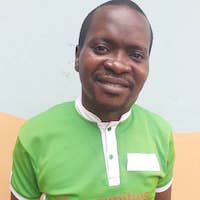 I am the assistant project officer with NHVMAS. I am responsible for coordinating the activities of HIV Prevention Coalition team members organized by NHVMAS.
I am the assistant project officer with NHVMAS. I am responsible for coordinating the activities of HIV Prevention Coalition team members organized by NHVMAS.
If you’re still involved in advocacy, please describe your primary advocacy goals.
My advocacy priorities include: 1) improving young people’s access to sexual and reproductive health (SRH) and HIV prevention services, treatment and care without parental consent barriers and 2) eliminating all user fees at HIV treatment sites.
In your opinion, what are one or two key advocacy priorities related to HIV/AIDS in your country or community today?
Key country priorities include 1) eliminating all user fees at HIV treatment sites, 2) ensuring that 25 percent of state budgets is allocated for HIV prevention and 3) reducing the age of consent for access to HIV and SRH services.
If you can, please reflect on the aspect of your Fellowship you’ve taken with you.
My Fellowship helped me to develop and strengthen strategic advocacy campaigns related to reducing the age of consent for access to HIV and SRH services.
South Africa
Nomfundo Eland – 2010
What are you up to now?
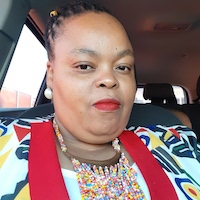 My focus is on adolescent girls and young women’s (AGYW) programming, women’s sexual and reproductive health rights and HIV prevention research.
My focus is on adolescent girls and young women’s (AGYW) programming, women’s sexual and reproductive health rights and HIV prevention research.
If you’re still involved in advocacy, please describe your primary advocacy goals.
My advocacy goal is to influence policy related to HIV, gender-based violence and femicide.
In your opinion, what are one or two key advocacy priorities related to HIV/AIDS in your country or community today?
Access to prevention modalities and prioritization of access to services for AGYW are two key national priorities.
If you can, please reflect on the aspect of your Fellowship you’ve taken with you.
The Fellowship exposed me to government officials, researchers and civil society decision-making platforms.
Brian Kanyemba – 2011
What are you up to now?
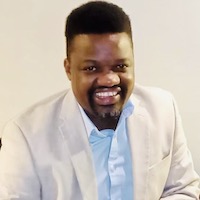 After ten years as an advocate, my focus is now on HIV prevention and HIV funding in Africa.
After ten years as an advocate, my focus is now on HIV prevention and HIV funding in Africa.
If you’re still involved in advocacy, please describe your primary advocacy goals.
I am involved in advocating for new prevention interventions for men who have sex with men and other key populations.
In your opinion, what are one or two key advocacy priorities related to HIV/AIDS in your country or community today?
My country and community must consider: 1) how COVID-19 impacts HIV prevention and 2) whether or how HIV prevention needs to be population specific.
If you can, please reflect on the aspect of your Fellowship you’ve taken with you.
The Fellowship brought me tremendous personal and career growth.
Leader Kanyiki Ngooyi – 2011
What are you up to now?
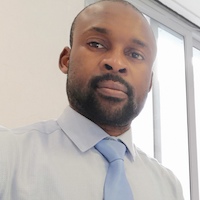 I have built my own organization called the “Batho pele coalition”, which focuses on counseling and support for young people and their families around issues such as substance abuse. I also work as a consultant with Africa Unite’s youth programming.
I have built my own organization called the “Batho pele coalition”, which focuses on counseling and support for young people and their families around issues such as substance abuse. I also work as a consultant with Africa Unite’s youth programming.
If you’re still involved in advocacy, please describe your primary advocacy goals.
My advocacy goals include advocating for human rights and equitable access to HIV prevention technologies.
In your opinion, what are one or two key advocacy priorities related to HIV/AIDS in your country or community today?
I believe that HIV/AIDS advocacy in the Western Cape should prioritize the promotion of and access to condoms and voluntary medical male circumcision and improvement in HIV literacy.
If you can, please reflect on the aspect of your Fellowship you’ve taken with you.
Being part of the 2011 Fellowship was a great milestone in my personal and professional career. I still use the tools, skills and knowledge that I developed from my experience.
Ntando Yola – 2013
What are you up to now?
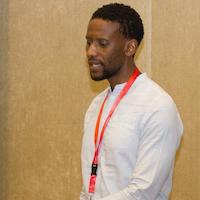 In addition to working at Desmond Tutu Health Foundation as a lead for community engagement, I’m involved in HIV prevention advocacy nationally through APHA, as well as through the Vaccine Advocacy Resource Group (VARG) and Africa free of New HIV infections (AfNHi). I’m involved broadly in advocating for the increased involvement of communities in prevention research and for improved access to HIV prevention tools.
In addition to working at Desmond Tutu Health Foundation as a lead for community engagement, I’m involved in HIV prevention advocacy nationally through APHA, as well as through the Vaccine Advocacy Resource Group (VARG) and Africa free of New HIV infections (AfNHi). I’m involved broadly in advocating for the increased involvement of communities in prevention research and for improved access to HIV prevention tools.
If you’re still involved in advocacy, please describe your primary advocacy goals.
My advocacy is focused on increasing communities’ involvement in research processes and decision-making related to HIV prevention. I am also invested in improving service delivery.
In your opinion, what are one or two key advocacy priorities related to HIV/AIDS in your country or community today?
A key advocacy priority for South Africa is to prepare more effectively for public health emergencies and crises such as COVID-19.
If you can, please reflect on the aspect of your Fellowship you’ve taken with you.
All of the work that I do today has been enhanced by my participation in the Fellowship.
John Mutsambi – 2015
What are you up to now?
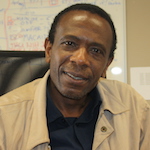 I’m the technical lead on HIV (specifically on PrEP) at TBHIV Care, and I’m involved in preparing new sites for the introduction of PrEP among adolescent girls and young women (AGYW) and preparing advocacy training for PrEP Champions at the PrEP implementation sites.
I’m the technical lead on HIV (specifically on PrEP) at TBHIV Care, and I’m involved in preparing new sites for the introduction of PrEP among adolescent girls and young women (AGYW) and preparing advocacy training for PrEP Champions at the PrEP implementation sites.
If you’re still involved in advocacy, please describe your primary advocacy goals.
I believe in the importance of advocating for the involvement of AGYW in decision-making around PrEP introduction and of building their own advocacy capacity.
In your opinion, what are one or two key advocacy priorities related to HIV/AIDS in your country or community today?
Major priorities in my country include ensuring that PrEP is available to everyone who needs it and advocating for funding PrEP programs at the community level.
If you can, please reflect on the aspect of your Fellowship you’ve taken with you.
My Fellowship was a good training ground for my current work at TBHIV Care.
Ntombozuko Kraai – 2016
What are you up to now?
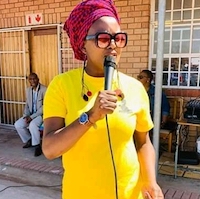 I continue to work in the field of women’s health and young women’s empowerment. I am particularly invested in ensuring that these populations have access to comprehensive reproductive health services.
I continue to work in the field of women’s health and young women’s empowerment. I am particularly invested in ensuring that these populations have access to comprehensive reproductive health services.
If you’re still involved in advocacy, please describe your primary advocacy goals.
My advocacy goals include improving communication with young people around sex and sexuality and ensuring community-centered approaches to biomedical research.
In your opinion, what are one or two key advocacy priorities related to HIV/AIDS in your country or community today?
Priorities include: 1) communicating scientific value and preventing the spread of misinformation on research trials to policy makers and 2) better and more accessible HIV prevention for women as part of comprehensive HIV and sexual and reproductive health services.
If you can, please reflect on the aspect of your Fellowship you’ve taken with you.
Young women’s voices matter on policy development. Little did I know that my Fellowship would give birth to the formation of my own dream project: African Women Rising. But there is still a lack of safe sex information, particularly for adolescents; the work continues.
Thuthukile Mbatha – 2017
What are you up to now?
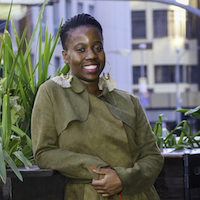 I’m a researcher at Section27, and my work is focused mainly on advocating for the advancement of sexual and reproductive health and rights (SRHR) in South Africa and beyond.
I’m a researcher at Section27, and my work is focused mainly on advocating for the advancement of sexual and reproductive health and rights (SRHR) in South Africa and beyond.
If you’re still involved in advocacy, please describe your primary advocacy goals.
Since the end of my AVAC Fellowship, which focused on advocacy for access to PrEP in higher education institutions, I realized that HIV doesn’t exist in isolation from all other issues related to SRHR. For this reason, my main focus now is on integrating SRHR in HIV prevention spaces.
In your opinion, what are one or two key advocacy priorities related to HIV/AIDS in your country or community today?
In South Africa, we are fortunate to have most of the various HIV prevention and management interventions. However, many people on the ground either do not know about them or are unable to access them; an individual’s geographical location and socioeconomic status are still major determinants for access to quality services.
If you can, please reflect on the aspect of your Fellowship you’ve taken with you.
Every year since the end of my Fellowship, I have continued to work with various groups of students on HIV prevention advocacy. I’m still approached by many students who have read about my Fellowship online for assistance with advocacy plans.
Ntokozo Zakwe – 2019
What are you up to now?
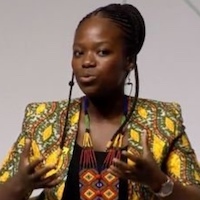 I am currently working with Community Media Trust (CMT) as the DREAMS Safe Spaces Facilitator.
I am currently working with Community Media Trust (CMT) as the DREAMS Safe Spaces Facilitator.
If you’re still involved in advocacy, please describe your primary advocacy goals.
I am still working towards ensuring that adolescent girls and young women’s voices are represented, and that they are meaningfully engaged in processes and decision-making around HIV prevention.
In your opinion, what are one or two key advocacy priorities related to HIV/AIDS in your country or community today?
A major priority is ensuring that everyone (especially key populations) can access information and services.
If you can, please reflect on the aspect of your Fellowship you’ve taken with you.
Through this Fellowship, I learned that the fight against injustice is far from over, but that if we are going to win this battle, every little effort matters!
Tanzania
Lilian Benjamin Mwakyosi – 2018
What are you up to now?
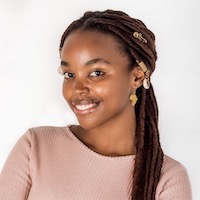 I am currently working as a technical advisor for adolescent girls and young women with COMPASS Africa at Tanzania Youth. I also I cofounded the DARE Organization for young women, which focuses on promoting young peoples’ access to social and health services.
I am currently working as a technical advisor for adolescent girls and young women with COMPASS Africa at Tanzania Youth. I also I cofounded the DARE Organization for young women, which focuses on promoting young peoples’ access to social and health services.
If you’re still involved in advocacy, please describe your primary advocacy goals.
I advocate for young women’s engagement in advancing access to HIV and sexual and reproductive health (SRH) services.
In your opinion, what are one or two key advocacy priorities related to HIV/AIDS in your country or community today?
Country priorities include: 1) the integration of HIV and SRH services, 2) expansion of HIV prevention options for women, including self-care and 3) Differentiated Service Delivery for HIV prevention.
If you can, please reflect on the aspect of your Fellowship you’ve taken with you.
An aspect of the Fellowship that I have taken with me is learning how to collect evidence and data to support my advocacy goals.
Uganda
Alice Kayongo-Mutebi – 2012
What are you up to now?
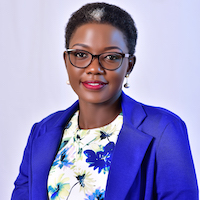 I am involved in health policy and advocacy work in Lesotho, Malawi and East and West Africa more broadly. I lead a team of volunteers under a not-for-profit initiative called “We Rise and Prosper” (WRAP), which aims to contribute to poverty reduction, improved health outcomes and fairness in society.
I am involved in health policy and advocacy work in Lesotho, Malawi and East and West Africa more broadly. I lead a team of volunteers under a not-for-profit initiative called “We Rise and Prosper” (WRAP), which aims to contribute to poverty reduction, improved health outcomes and fairness in society.
If you’re still involved in advocacy, please describe your primary advocacy goals.
My advocacy goals are: 1) to build and strengthen a community of passionate grassroots advocates and 2) to become a highly influential change-agent in health policy at global, regional and national levels.
In your opinion, what are one or two key advocacy priorities related to HIV/AIDS in your country or community today?
National priorities include: 1) domestic financing for the HIV/AIDS response, including research and development and 2) investment in HIV prevention interventions on the same level as treatment interventions.
If you can, please reflect on the aspect of your Fellowship you’ve taken with you.
My Fellowship was one of the most empowering undertakings of my life. The Fellowship strengthened the advocate in me, and I left with a wealth of experience, exposure, information and wide networks at global, regional and national levels.
Lydia Mulwanyi-Mukombe – 2012
What are you up to now?
I work for UNFPA as a Senior Policy Advisor, supporting the Uganda Family Planning Consortium.
If you’re still involved in advocacy, please describe your primary advocacy goals.
My primary advocacy goal is to influence the policy environment that would facilitate access to reproductive health services, including family planning.
In your opinion, what are one or two key advocacy priorities related to HIV/AIDS in your country or community today?
One national priority is to bridge the gap in the integration of HIV/AIDS services and reproductive health services.
If you can, please reflect on the aspect of your Fellowship you’ve taken with you.
My Fellowship taught me how to be resilient in pushing for change in policy and programs that improve women’s health.
Charles Brown – 2014
What are you up to now?
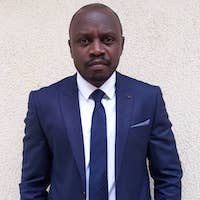 I manage a civil society organisation that I founded in 2013, and I remain involved in advocacy related to HIV prevention, reproductive health and economic empowerment.
I manage a civil society organisation that I founded in 2013, and I remain involved in advocacy related to HIV prevention, reproductive health and economic empowerment.
If you’re still involved in advocacy, please describe your primary advocacy goals.
My primary advocacy goals include scaling up HIV prevention options, increasing key populations’ access to sexual and reproductive health services and supporting the economic empowerment of key populations, rural communities and displaced persons.
In your opinion, what are one or two key advocacy priorities related to HIV/AIDS in your country or community today?
National priorities include increasing accessibility to HIV prevention for all populations and addressing other factors related to HIV, including gender-based violence and economic vulnerability.
If you can, please reflect on the aspect of your Fellowship you’ve taken with you.
My Fellowship contributed to the development of PrEP guidelines for Uganda and informing people about PrEP. As a member of the PrEP Technical Working Group at the Ministry of Health, I am still a strong advocate for scaling up PrEP and still participate in community training of PrEP providers and the monitoring of PrEP delivery.
Kenneth Mwehonge – 2015
What are you up to now?
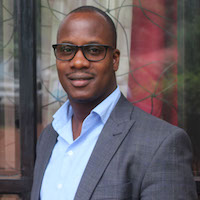 I am currently implementing a new social accountability model that pairs a community scorecard with PEPFAR Site Improvement Monitoring Systems (SIMS) to strengthen the community/civil society accountability of PEPFAR programs in Uganda. I am also co-coordinating civil society organizations’ engagement with PEPFAR at the country level and overseeing the implementation of community-led monitoring in Uganda.
I am currently implementing a new social accountability model that pairs a community scorecard with PEPFAR Site Improvement Monitoring Systems (SIMS) to strengthen the community/civil society accountability of PEPFAR programs in Uganda. I am also co-coordinating civil society organizations’ engagement with PEPFAR at the country level and overseeing the implementation of community-led monitoring in Uganda.
If you’re still involved in advocacy, please describe your primary advocacy goals.
My key advocacy goals are addressing challenges and opportunities in development, particularly in the areas of HIV health policy and working strategically with communities, development partners, private sector, government and non-government actors.
In your opinion, what are one or two key advocacy priorities related to HIV/AIDS in your country or community today?
A key country priority includes ensuring meaningful and strategic community involvement in the delivery of HIV/AIDS services.
If you can, please reflect on the aspect of your Fellowship you’ve taken with you.
My Fellowship project led civil society advocacy campaigns to introduce routine viral load monitoring for all people enrolled in HIV treatment in Uganda.
Moses Supercharger – 2017
What are you up to now?
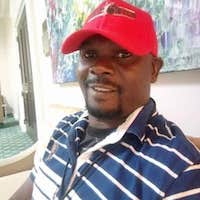 I currently train new advocates, and I am organizing the construction of an HIV treatment center.
I currently train new advocates, and I am organizing the construction of an HIV treatment center.
If you’re still involved in advocacy, please describe your primary advocacy goals.
My key advocacy goal is to ensure that people living with HIV/AIDS have access to and adhere to quality ART.
In your opinion, what are one or two key advocacy priorities related to HIV/AIDS in your country or community today?
One national priority is to improve adherence in order to ensure that people living with HIV are virally suppressed.
If you can, please reflect on the aspect of your Fellowship you’ve taken with you.
The AVAC Fellowship gave me the tools to continue my fight for viral suppression and a cure for HIV/AIDS.
Bridget Jjuuko – 2018
What are you up to now?
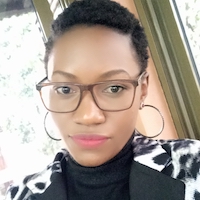 I founded an organization (Acts101 Uganda) focused on health and developmental programs for children, adolescents and youth. My recent HIV/sexual and reproductive health and rights work has involved targeted advocacy for accelerated engagement of adolescent girls and young women (AGYW) in HIV programs and research both national and globally.
I founded an organization (Acts101 Uganda) focused on health and developmental programs for children, adolescents and youth. My recent HIV/sexual and reproductive health and rights work has involved targeted advocacy for accelerated engagement of adolescent girls and young women (AGYW) in HIV programs and research both national and globally.
If you’re still involved in advocacy, please describe your primary advocacy goals.
My advocacy goals include prioritizing the involvement of young people in HIV programs and research.
In your opinion, what are one or two key advocacy priorities related to HIV/AIDS in your country or community today?
Advocacy priorities in my country include integrating young people in HIV prevention.
If you can, please reflect on the aspect of your Fellowship you’ve taken with you.
My passion for advocacy related to AGYW has only deepened. Through my Fellowship, I learned how to work in coalitions and create strategic partnerships with others who have shared advocacy goals.
Shakirah Namwanje – 2019
What are you up to now?
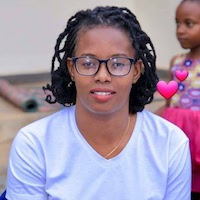 I am currently a programs officer at my host organization and still focused on advocacy.
I am currently a programs officer at my host organization and still focused on advocacy.
If you’re still involved in advocacy, please describe your primary advocacy goals.
My advocacy goals include HIV prevention research advocacy, ending sexual violence against adolescent girls and young women and women’s health.
In your opinion, what are one or two key advocacy priorities related to HIV/AIDS in your country or community today?
The AIDS Trust Fund has opened up advocacy around domestic funding. Reducing stigma and discrimination (especially against key populations) also remains a priority.
If you can, please reflect on the aspect of your Fellowship you’ve taken with you.
Through my Fellowship, I learned more about the importance of HIV research in advocacy work.
Zambia
Clever Chilende – 2012
What are you up to now?
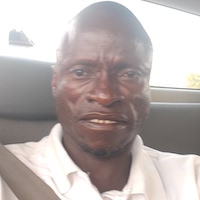 I’m a Programs Manager with the Treatment Advocacy and Literacy Campaign.
I’m a Programs Manager with the Treatment Advocacy and Literacy Campaign.
If you’re still involved in advocacy, please describe your primary advocacy goals.
Advocacy is our core business. We are pushing for effective rollout of PrEP and mobilizing communities to take a keen interest in clinical trials by holding researchers accountable.
In your opinion, what are one or two key advocacy priorities related to HIV/AIDS in your country or community today?
Key advocacy priorities include: 1) increased domestic resource allocation to HIV prevention and treatment and HIV clinical trials and 2) effective rollout of HIV prevention interventions.
If you can, please reflect on the aspect of your Fellowship you’ve taken with you.
Eight years ago, I was fighting for recognition in spaces where decisions were made. It was exciting to find myself in the National VMMC technical working group, pushing for domestic resource allocation for VMMC. I’m still invited to engage in different important national processes and platforms regarding VMMC and other prevention options.
Chilufya Hampongo – 2016
What are you up to now?
 I’m passionate about the integration of HIV and sexual and reproductive health and rights services to meet the needs of adolescent girls and young women using the “women at the center” approach. This is reflected in my current role at TALC.
I’m passionate about the integration of HIV and sexual and reproductive health and rights services to meet the needs of adolescent girls and young women using the “women at the center” approach. This is reflected in my current role at TALC.
If you’re still involved in advocacy, please describe your primary advocacy goals.
My advocacy goals include working with policy makers to improve HIV and reproductive health supply chains.
In your opinion, what are one or two key advocacy priorities related to HIV/AIDS in your country or community today?
An advocacy priority for my country includes increasing national investment in HIV prevention strategies such as PrEP and expanding interest in HIV research.
If you can, please reflect on the aspect of your Fellowship you’ve taken with you.
An important lesson from the Fellowship is that advocacy requires many people working together to achieve a common goal.
Zimbabwe
Munya Chimwara – 2010
What are you up to now?
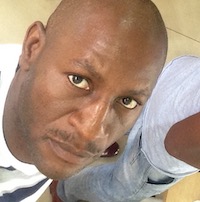 I am the Project Lead on COMPASS Zimbabwe, in which I advocate for quality and affordable health service delivery in Zimbabwe.
I am the Project Lead on COMPASS Zimbabwe, in which I advocate for quality and affordable health service delivery in Zimbabwe.
If you’re still involved in advocacy, please describe your primary advocacy goals.
We are advocating for access to sexual and reproductive health services for adolescents and young women and for the provision of quality and affordable health services in Zimbabwe.
In your opinion, what are one or two key advocacy priorities related to HIV/AIDS in your country or community today?
National priorities include: 1) HIV prevention for adolescents and young women ages 10-24 years and 2) sustainable provision of HIV medicines (ART).
If you can, please reflect on the aspect of your Fellowship you’ve taken with you.
I learned that community-based advocacy is the key to achieving advocacy goals and sustainable advocacy.
Memory Makamba – 2012
What are you up to now?
 I’m now working as a social scientist on key population research.
I’m now working as a social scientist on key population research.
If you’re still involved in advocacy, please describe your primary advocacy goals.
One of my major advocacy goals is to ensure access to and uptake of PrEP among female sex workers in Zimbabwe.
In your opinion, what are one or two key advocacy priorities related to HIV/AIDS in your country or community today?
Increased PrEP uptake is a major advocacy goal for Zimbabwe.
Chamunorwa Mashoko – 2012
What are you up to now?
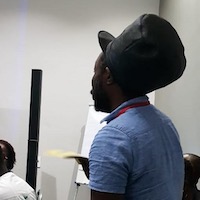 I monitor PEPFAR via the Community Led Monitoring program.
I also work on music with a band called Gwevedzi.
I monitor PEPFAR via the Community Led Monitoring program.
I also work on music with a band called Gwevedzi.
If you’re still involved in advocacy, please describe your primary advocacy goals.
My advocacy goals include advocating for increased domestic health financing for HIV prevention.
In your opinion, what are one or two key advocacy priorities related to HIV/AIDS in your country or community today?
National priorities include increasing domestic funding for the HIV response broadly and improving access to viral load testing and monitoring.
If you can, please reflect on the aspect of your Fellowship you’ve taken with you.
The Fellowship has grown into a national and global trend, rendering coalition building and monitoring a must.
Rumbi Makandwa – 2013
What are you up to now?
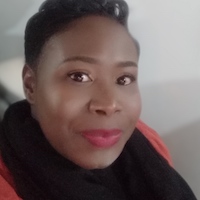 I remain focused on ensuring that sex workers receive comprehensive health care throughout Zimbabwe.
I remain focused on ensuring that sex workers receive comprehensive health care throughout Zimbabwe.
If you’re still involved in advocacy, please describe your primary advocacy goals.
Since 2016, my advocacy goal has been promoting sex workers’ rights. I am also advocating for men and trans sex workers to be included in HIV programming in Zimbabwe.
In your opinion, what are one or two key advocacy priorities related to HIV/AIDS in your country or community today?
Key national priorities include ensuring that key populations are adequately incorporated into the national strategies for HIV prevention and treatment.
If you can, please reflect on the aspect of your Fellowship you’ve taken with you.
I learned how to conduct advocacy with sex workers and how to introduce of programs in partnership with this population of stakeholders.
Definate Nhamo – 2014
What are you up to now?
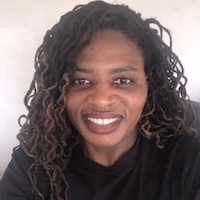 I am working on dapivirine ring planning and introduction under the PROMISE consortium, funded by USAID.
I am working on dapivirine ring planning and introduction under the PROMISE consortium, funded by USAID.
If you’re still involved in advocacy, please describe your primary advocacy goals.
My primary advocacy goal is to work with the Ministry of Health to plan, introduce, roll out and scale up biomedical prevention options such as oral PrEP, the dapivirine ring and cabotegravir long-acting injectables.
In your opinion, what are one or two key advocacy priorities related to HIV/AIDS in your country or community today?
National priorities include: 1) getting HIV prevention options to people who need them most (such as adolescent girls and young women) in order to reduce HIV incidence and 2) making HIV prevention options affordable to those in need of them.
If you can, please reflect on the aspect of your Fellowship you’ve taken with you.
Through my Fellowship, I learned how to effectively engage with communities, policy makers and other stakeholders and how to conduct evidence-based advocacy to move agendas forward.
Anna Miti – 2015
What are you up to now?
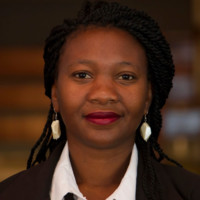 I am working as a journalist at the Zimbabwe Broadcasting Corporation and also as a media trainer and coordinator of media science cafes.
I am working as a journalist at the Zimbabwe Broadcasting Corporation and also as a media trainer and coordinator of media science cafes.
If you’re still involved in advocacy, please describe your primary advocacy goals.
With support from the International Partnership for Microbicides, I work with adolescents to advocate for sexual and reproductive health and rights (SRHR) and HIV prevention among young people.
In your opinion, what are one or two key advocacy priorities related to HIV/AIDS in your country or community today?
We need to ensure that young people have access to PrEP and other SRHR services. We also need to ensure that they have information about SRHR, which in turn creates demand and uptake for services.
If you can, please reflect on the aspect of your Fellowship you’ve taken with you.
The Fellowship was life-changing for my career, and I have been able to use my experience to advance both my career and advocacy goals.
Sinkiwe Angeline Chivese – 2017
What are you up to now?
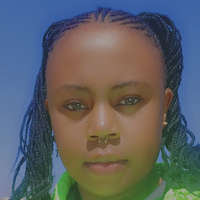 I’m currently participating in the AMETHIST Study at CeSHHAR Zimbabwe.
I’m currently participating in the AMETHIST Study at CeSHHAR Zimbabwe.
If you’re still involved in advocacy, please describe your primary advocacy goals.
My advocacy goal is to increase uptake of proven interventions, especially prevention strategies such as PrEP.
In your opinion, what are one or two key advocacy priorities related to HIV/AIDS in your country or community today?
A major advocacy priority is ensuring that young sex workers are incorporated in decision-making and programming around HIV prevention.
Bathabile Nyathi – 2017
What are you up to now?
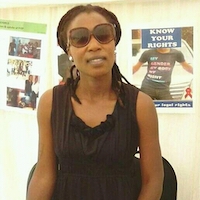 I still work with the CeSHARR sex work program and am the vice chairperson and the cofounder of a sex worker-led organisation, Women Against All Forms of Discrimination (WAAD).
I still work with the CeSHARR sex work program and am the vice chairperson and the cofounder of a sex worker-led organisation, Women Against All Forms of Discrimination (WAAD).
If you’re still involved in advocacy, please describe your primary advocacy goals.
My advocacy goals focus on the rights of sex workers, both in terms of HIV prevention and more broadly.
In your opinion, what are one or two key advocacy priorities related to HIV/AIDS in your country or community today?
One national priority is to create health services that are destigmatizing and friendly to all populations.
If you can, please reflect on the aspect of your Fellowship you’ve taken with you.
The Fellowship helped me improve sex workers’ access to PrEP in Zimbabwe.
Deloune Comfort Matongo – 2018
What are you up to now?
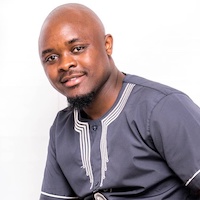 I was recently appointed the National KP Coordinator under PSI Zimbabwe. I have also worked for GALZ as an LGBT Advocate and M&E Officer since completing my Fellowship.
I was recently appointed the National KP Coordinator under PSI Zimbabwe. I have also worked for GALZ as an LGBT Advocate and M&E Officer since completing my Fellowship.
If you’re still involved in advocacy, please describe your primary advocacy goals.
One of my advocacy goals is to improve access to health services for LGBTQ+ people in Zimbabwe.
In your opinion, what are one or two key advocacy priorities related to HIV/AIDS in your country or community today?
Key advocacy priorities in Zimbabwe include increasing the availability of acceptable biomedical HIV prevention options for LGBTQ+ people.
If you can, please reflect on the aspect of your Fellowship you’ve taken with you.
I have continued in advocacy to create an enabling environment for LGBTQ+ programming, including access to different HIV prevention options.
Cleopatra Makura – 2019
What are you up to now?
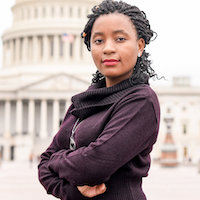 I am raising awareness for the dapivirine ring.
I am raising awareness for the dapivirine ring.
If you’re still involved in advocacy, please describe your primary advocacy goals.
My advocacy goal is to ensure that young women have accurate information regarding the ring before and after rollout.
In your opinion, what are one or two key advocacy priorities related to HIV/AIDS in your country or community today?
Country priorities include increasing awareness of new HIV prevention methods like the dapivirine ring, and engaging the community in HIV research.
If you can, please reflect on the aspect of your Fellowship you’ve taken with you.
The Fellowship was a learning opportunity for me and also allowed me to make a positive impact in my community.